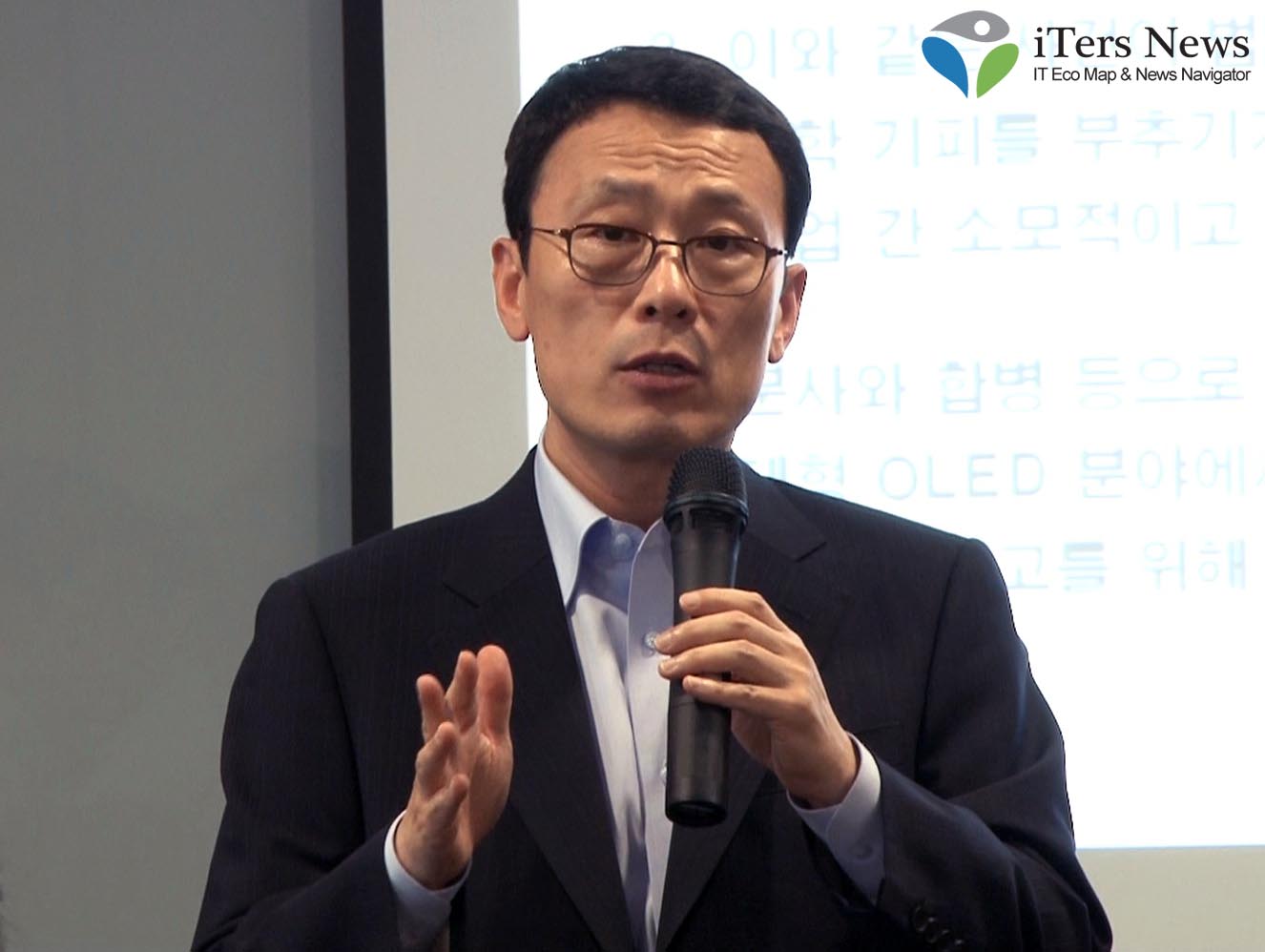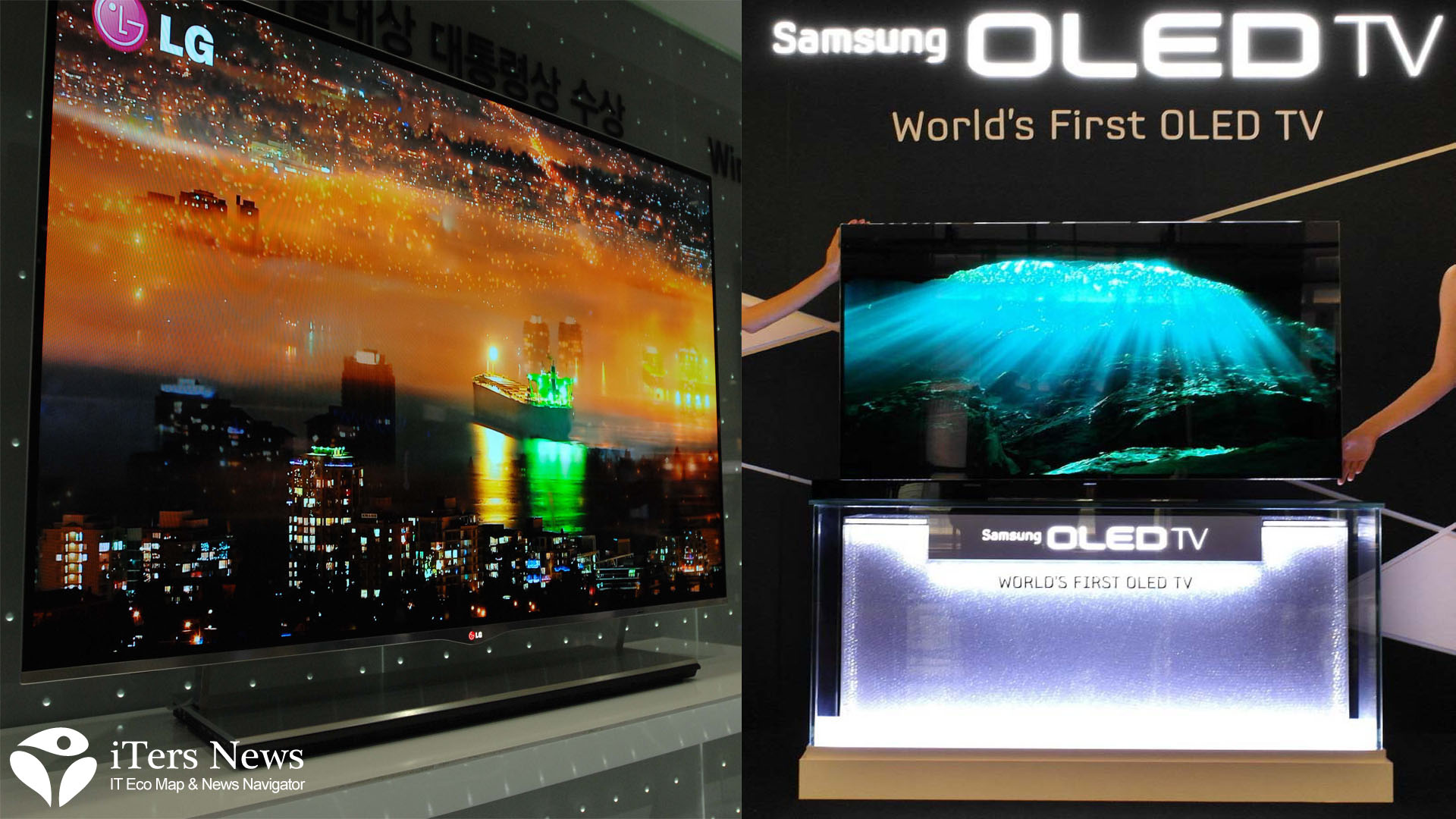(iTers News) – Korea’s two rival LCD and OLED display makers – Samsung Display and LG Display-get embroiled in what’s referred to as the country’s most scandalous corporate technology leakage conspiracy ever.
The Suwon District Prosecutor Office today indicted 11 former and incumbent engineers from LG Display and its OLED equipment supplier without detention on charges that they conspired to steal a set of trade secrets on Samsung’s OLED manufacturing.
Korea’s trade secret law stipulates that a violator of the law should not only face criminal trials, but also stand on a civil trial.
Details of the stolen technologies in question are not disclosed yet, but they seem to involve organic materials deposition and encapsulation processes- the most crucial step to deposit and etch a matrix of organic LED cells on a TFT backplane.
Pull the string
Blaming rival LG Display for pulling the string behind the technology-leakage conspiracy, Samsung Display said in its statement that it would potentially cost several ten trillion Korean won in lost sales as well as market share erosion.
Samsung Display, an offspring of Samsung Electronics’ TFT-LCD unit, recently merged with AMOLED maker Samsung Mobile Display to create the world’s largest AMOLED and TFT-LCD maker.
Samsung has a 97% share of global small and medium size AMOLED market, mainly supplying smartphone and tablet PC makers across the world.
Expressing its regret on the prosecutor office’s decision for the detention-less indictment, however, LG Display insisted in its statement that the technology in question has nothing to do with a trade secret law, but is just no more than a piece of the already publicized technology information.
LG also said that the company has no reason to steal Samsung’s OLED technology, because it has been working on a different OLED manufacturing process using an oxide TFT backplane and a matrix of self-luminescent white color OLED cells to produce WRGB AMOLED panels
Samsung Display has been building a line of its AMOLED panels using a LTPS, or low temperature poly-silicon TFT backplane and a fine metal mask method for depositing and etching a matrix of self-lightening red, green and blue OLED cells.
Oxide vs. LTPS
The two different manufacturing processes and technologies have their own pros and cons, compared with each other, so that the two companies have been working on both ways on the- behind-the scene, trying to take a peek into what others are doing.
The legal tug-of-war between the two rivals is rare in the two companies’ corporate history.
The two companies have often worked together under the patronage of the Korean government not only to develop new technology breakthroughs in TFT-LCD, AMOLED and other display sectors, but also share the same manufacturing infrastructure like equipment and tools
As a result, the rarity underscores how fiercely they are butting head-on-head to gain a head-start of yet fledgling, but potentially huge AMOLED panel market. It also demonstrates how crucial AMOLED technology is in their future growth.
As global LCD TV markets got matured in most of advanced economies, the two display makers are pinning their hopes for future growth on AMOLED panels. AMOLEDs boast crystal-clear and life-like color representation, so that global LCD makers bet on them not only as a game changer, but also a new generation of growth catalyst of global TV market.
Samsung Electronics and LG Electronics –parent companies of the two display panel makers-already demonstrated their respective 55-inch AMOLED TVs in early January, which were built around different technology platforms.
Race for head-start
And, they are now in a mad race to bring them to market ahead of other.
At the heart of the legal scandal is former engineer of Samsung Mobile Display, who was nicknamed just by the family name of Cho. According to the prosecutor office, Mr. Cho at the age of 45, was found to leak crucial pieces of Samsung’s large-size OLED manufacturing technology and know-how seven times to 4 LG executives via email starting in May 2011.
Mr. Cho resigned from Samsung in late 2010 and moved to YAS Co., Ltd, an OLED equipment maker, who has been supplying OLED material deposition and encapsulation equipment. During his work at YAS, he was charged with conspiring with then 5 other incumbent Samsung engineers to leak technology information.
During his tenure at YAS Co., Ltd, Mr. Cho was known to be in charge of developing and building OLED deposition equipment based on Samsung’s proprietary technology.
At a press conference held today afternoon, Lee, Bang Soo, senior vice-president of business support group with LG Display, downplayed the leaked technology information as just simple tips on market and technology trends.
Yet, he conceded that Mr. Cho contacted and had sent email messages to the 4 LG executives, who were charged, too.
According to senior vice-president Lee, Mr. Cho voluntarily contacted LG in October and November 2010 to find new job career opportunities. Yet, LG could not afford to hire him immediately, because his employment contract with Samsung prohibits him from moving and working for Samsung’s competitors during the next 3 years after he leaves Samsung.
To deliver on the contract, he was arranged to work at YAS, LG said.
Mr. Cho and other 5 former and incumbent Samsung engineers, who were found to get involved in the leakage, were indicted with not detention. The 4 LG executive were indicted, too but with no detention. Ironically, one executive from YAS was also indicted on the conspiracy charges with no detention.
Spells troubles for equipment makers
Yet, the scandalous legal battle spells big troubles for all players of Korea’ AMOLED manufacturing ecosystem.
On fears that they will inadvertently get trapped into the two companies’ legal battle over patents, or trade secrets, their contract manufacturing equipment suppliers like YAS will turn reluctant to supply both companies, taking a risk to suffer lost sale opportunities in fragmented markets.
The fragmentation of the manufacturing ecosystem also costs them a lot, because they have no alternative but to purchase a set of different, non-standardized, manufacturing equipment, paying higher prices than otherwise.
AMOLED panels are built on TFT backplane, a matrix of thin film transistors that switch on and off OLED cells. On top of the TFT backplane, small molecule or polymer organic materials are deposited to create a grid of OLED cells.
Samsung uses LTPS as a base material for TFTs, and then deposit polymer organic materials to create a matrix of RGB OLED cells using fine metal masks, or FMMs to produce 55-inch AMOLED display panels.
LG works on oxide materials to etch TFTs on a glass and the deposit organic material to create white OLED cells. LG uses RGB color filters to create color images on AMOLED panels
Samsung’s LTPS and FMM technology is better than LG’s in color gamut and pixel switching time, with no RGB color filter, but it is costlier to manufacture 10-inch and larger screens.
LG’s is relatively cheaper to manufacture, but is not as fast in switching pixels as Samsung’s, responding to image signals in a matter of 0.02 milliseconds.
Samsung’s respond in matter of microseconds, ten times faster than LG’s.



